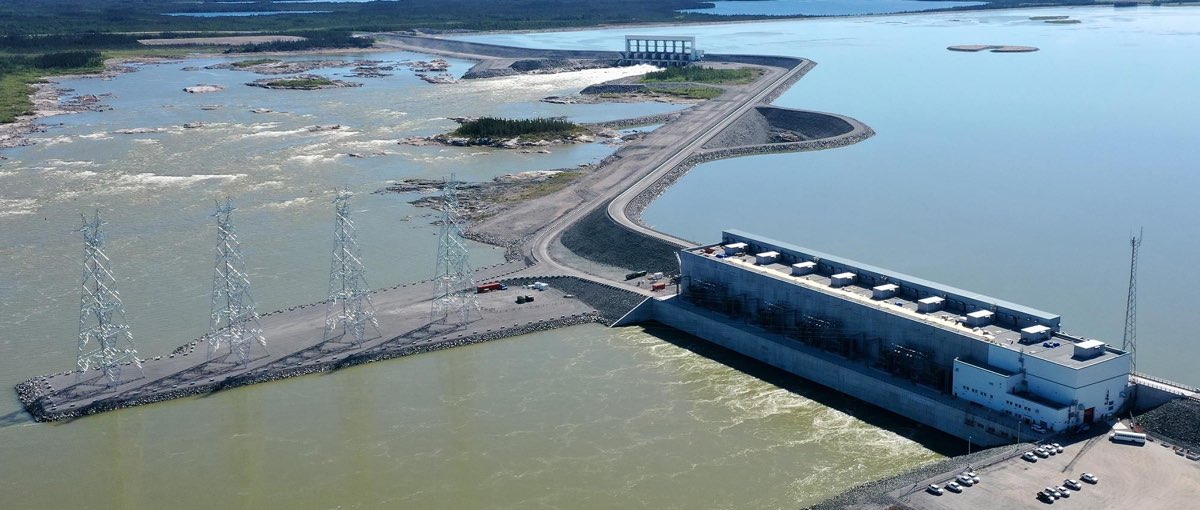Providing power alongside some prehistoric pals: how Hydro works with Lake Sturgeon
Manitoba Hydro has been operating hydropower stations for over 100 years. While that may sound like a long time, it pales in comparison to a much older river resident: Lake Sturgeon.
Lake Sturgeon, called Namao in Cree, is a prehistoric freshwater fish that is considered a “living fossil”. They were a staple of Manitoba lakes and rivers and Indigenous cultures long before Canada existed.
Sturgeon are unlike many other freshwater fish: they can grow to be huge (some reports indicate sturgeon up to 400 lbs), they can live a long time (up to 150 years), and they spawn relatively slowly (they often don’t reach sexual maturity until 20-25 years old).
Sturgeon have a difficult history. Revered by Indigenous cultures as a valuable food source, early settlers saw little value in the fish. In some cases they would even burn sturgeon as fuel for steam ferries (the fish is quite oily and so would burn). However, around 1860, settlers began to see sturgeon as a viable substitute for smoked halibut, and its caviar became a sought-after delicacy. This new interest made sturgeon the most valuable fish in North America, which led to overfishing — and declining populations — across the continent.
Hydroelectric facilities along sturgeon-heavy rivers pose a challenge for rebuilding fish populations. The Nelson River commercial sturgeon fishery was shut down in 1992, and in 1994, the Nelson River Sturgeon Board began stocking hatchery-reared fish. Recognizing the impact of our operations on the fish’s natural habitat, Manitoba Hydro has been a part of the Sturgeon Board — and several other research and conservation groups — since then.

The Nelson River Sturgeon Board, with members from First Nations and northern communities, the Government of Manitoba and Manitoba Hydro, works to ensure sturgeon populations — and the ecosystems they inhabit — are healthy in the reach of the upper Nelson River. Manitoba Hydro also funds and participates on two other sturgeon conservation groups: the Kischi Sipi Namao Committee, which focuses on conservation efforts on the lower Nelson River (including where the Keeyask construction project is underway), and the Saskatchewan River Sturgeon Management Board, on the Saskatchewan River.
In this video, watch as 51 baby sturgeon from Manitoba Hydro’s Grand Rapids Hatchery are flown to Gillam and released in the Nelson River as part of a Kischi Sipi Namao Committee ceremony.
As owner of the Grand Rapids Fish Hatchery in Central Manitoba, Manitoba Hydro is responsible for producing and stocking fish. Every year, the Grand Rapids hatchery coordinates with other sturgeon-stocking stakeholders to collect fish eggs between late May and early June. The hatchery rears two species of fish: sturgeon and walleye. The fish grow in a controlled environment, under constant monitoring and supervision, until they’re large enough to be released into the wild. Lake Sturgeon are stocked as fingerlings or yearlings into their native waterways to support populations in the area.
Go inside the Grand Rapids Fish Hatchery with Shaun Kirchmann, one of our fish culturists. The hatchery houses over 1,500 fish.
Manitoba Hydro also tags a number of Lake Sturgeon every year to track population size and monitor movements of the fish throughout their native waterways. Annual status reports are available on our website and we’ve summarized our years of knowledge, experience, and sturgeon-raising partnerships into a single 2019 report called Lake Sturgeon in Manitoba — A Summary of Current Knowledge. Our research and partnerships with Indigenous communities has put us in a unique position to help ensure that this amazing fish continues to thrive in Manitoba’s waterways for generations to come.
